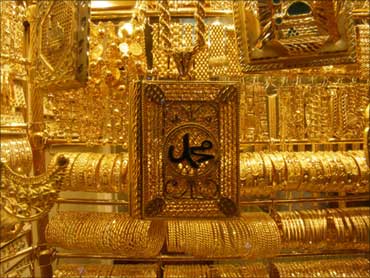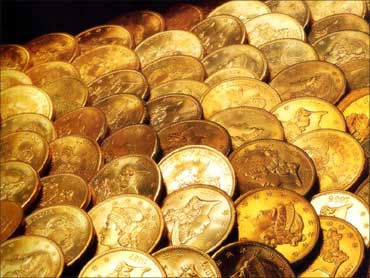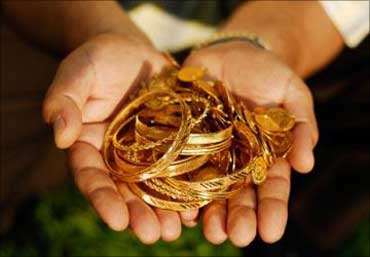
Gold prices touched a new high of $1,445.30 an ounce on Monday amid unrest in North Africa and West Asia.
With oil and other major commodities also continuing their ascent, what does that mean for gold going ahead?
Thomson Reuters Proprietary Research study pointed to a strong momentum for gold over the medium term, identifying strong global liquidity and low interest rates as support for a continued rally.
The Commitment of Traders report from the Commodity Futures Trading Commission shows mixed views from traders.
The net positions of producers/users in the last four weeks have seen a continuous decline on account of an increased hedging activity by selle rs to lock in higher prices.
. . .

This points out to a neutral to bearish near-term outlook.
Money managers have been adding their net positions since early February.
Their net positions have increased 53 per cent till March 1, as gold prices have moved upward (about 7.4 per cent) since their pullback in January.
Money managers' recent actions point to an increased buying interest and may suggest a near-term bullish outlook.
The other reportable category largely consists of small traders.
This is often considered a contrary indicator as these traders tend to 'bet against the big boys' (large speculators).
These traders are currently bullish, as their net positions are the lowest in the last six months -- this may again be a bullish indicator.
. . .

Swap dealers have been adding more short positions in the last few weeks than long, and this may indicate they are turning bearish.
Among other factors, real interest rates also have a significant bearing on gold prices. During low to negative real interest rate periods, holding dollars through Treasury bills or notes would yield a negative return, so investors turn to gold as a store of value, thereby driving prices up.
Real rates (difference between the one-year Treasury yield and the annual inflation rate) have remained negative in the US since late 2009, propelling gold to higher levels.
Rising inflation expectations also appear to be aiding gold's ascent.
The expected global inflation rate over the next six months as measured by the IFO World Economic Survey has risen from 5.9 per cent in the second quarter of 2010 to 6.6 per cent now.
. . .

Rising agri-commodity and energy prices, along with continued expansionary policies in the West, are likely to keep gold prices up.
The gold's performance, when compared to other precious and industrial metals, shows that silver has clearly been the leader in the pack, turning in a price return of about 570 per cent from 2001 to 2010, followed by copper at 434 per cent.
Gold's gain, on the other hand has been 419 per cent. This may be supportive of the view that gold, not being a real store of value in an industrial sense, may not be the best high-beta commodity play.
Gold's widely claimed status of being a safe haven, especially in tough economic environments, becomes more pronounced when its returns in the two recessions is considered.
During the dotcom bubble burst (March-November 2001) and the subprime/housing crisis (December 2007-June 2009), gold delivered the highest, and positive, returns, while most other metals generated negative returns.